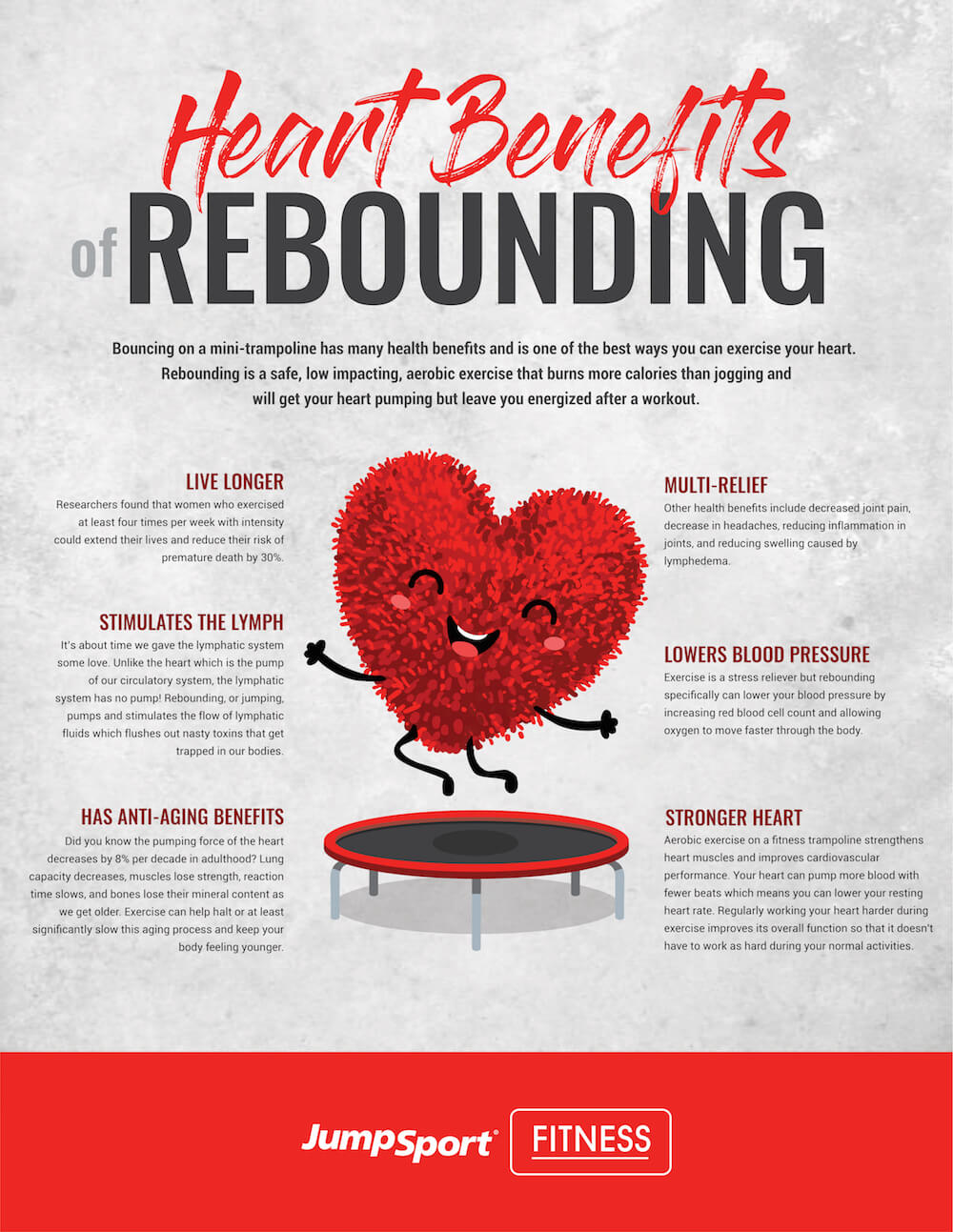Benefits of a Rebounder
A rebounder, also known as a mini trampoline, is a versatile fitness equipment that offers numerous benefits for individuals of all ages and fitness levels. In this article, we will explore the various advantages of using a rebounder and how it can contribute to your overall health and well-being.
Improved Cardiovascular Health
Regular cardiovascular exercise is essential for maintaining a healthy heart and reducing the risk of cardiovascular diseases. Using a rebounder is an excellent way to get your heart pumping and increase your cardiovascular fitness.
When you bounce on a rebounder, the repetitive up-and-down motion stimulates the lymphatic system, which helps to remove toxins from the body and improve circulation. This increased circulation not only benefits your cardiovascular system but also enhances the overall oxygen supply to your body’s cells.
Enhanced Lymphatic System Function
The lymphatic system plays a crucial role in maintaining a strong immune system and removing waste products from the body. Rebounding exercises can significantly improve the function of your lymphatic system.
As you bounce on a rebounder, the rhythmic movements cause the one-way valves in your lymphatic system to open and close, promoting the flow of lymph fluid. This helps to flush out toxins, waste, and other unwanted substances from your body, ultimately boosting your immune system and overall health.
Increased Bone Density
As we age, maintaining strong and healthy bones becomes increasingly important. Regular rebounding exercises can help improve bone density and reduce the risk of osteoporosis.
When you bounce on a rebounder, the impact forces exerted on your bones stimulate bone growth and increase bone mineral density. This is particularly beneficial for individuals at risk of or already experiencing bone loss, such as postmenopausal women or individuals with osteopenia.
Improved Balance and Coordination
Using a rebounder requires focus, coordination, and balance, making it an excellent exercise for improving these skills. The unstable surface of the trampoline challenges your body’s balance and forces you to engage your core muscles to maintain stability.
Regular rebounding exercises can help enhance your overall balance and coordination, which can have a positive impact on your daily activities and reduce the risk of falls and injuries.
Effective Weight Management
Rebounding is a low-impact, high-intensity exercise that can be an effective tool for weight management. The constant movement and increased heart rate during rebounding sessions help burn calories and improve metabolism.
Furthermore, rebounding exercises engage multiple muscle groups, including the legs, core, and arms, resulting in overall toning and increased muscle mass. This can contribute to a higher metabolism, making it easier to maintain a healthy weight or achieve weight loss goals.
Stress Relief
Exercise, including rebounding, is a well-known stress reliever. The rhythmic bouncing motion on a rebounder can help release endorphins, also known as “feel-good” hormones, which can improve mood and reduce stress levels.
Additionally, rebounding provides a fun way to unwind and take a break from daily stressors. The combination of physical activity increased blood flow, and the release of endorphins can have a positive impact on your mental well-being.

A rebounder offers a wide range of benefits for your physical and mental health. From improving cardiovascular fitness and bone density to enhancing balance and coordination, rebounding is a versatile exercise that can be enjoyed by individuals of all ages and fitness levels.
So, why not incorporate rebounding into your fitness routine and experience these incredible benefits for yourself? Get bouncing and take a step towards a healthier and happier you!
Frequently Asked Questions – Benefits of a Rebounder
1. What is a rebounder?
A rebounder is a small trampoline-like device used for exercise and fitness purposes.
2. What are the benefits of using a rebounder?
Using a rebounder offers several benefits such as:
Improved cardiovascular health
Increased lymphatic circulation
Enhanced balance and coordination
Low impact on joints
Improved bone density
3. How does a rebounder improve cardiovascular health?
Jumping on a rebounder increases heart rate and improves blood circulation, thereby enhancing cardiovascular health.
4. What is lymphatic circulation and how does a rebounder help?
Lymphatic circulation is the process by which lymph fluid moves through the body, aiding in waste removal and immune system function. Rebounding stimulates the lymphatic system, helping to detoxify the body and strengthen the immune system.
5. How does a rebounder enhance balance and coordination?
The unstable surface of a rebounder challenges your balance and forces your body to engage different muscle groups, leading to improved balance and coordination over time.
6. Why is low impact important for joint health?
Rebounding is a low-impact exercise, meaning it puts less stress on your joints compared to activities like running or jumping on hard surfaces. This makes it ideal for people with joint issues or those looking for a gentler form of exercise.
7. How does rebounding improve bone density?
Jumping on a rebounder stimulates bone growth and helps prevent bone loss, making it an effective exercise for improving bone density and reducing the risk of osteoporosis.
8. Can anyone use a rebounder?
Rebounders are generally safe for most individuals, but it’s always recommended to consult with a healthcare professional before starting any new exercise routine, especially if you have any pre-existing medical conditions.
9. How often should I use a rebounder?
The frequency of rebounder use depends on your fitness level and goals. It’s generally recommended to start with a few minutes of rebounding per day and gradually increase the duration and intensity as your body adjusts.
10. Are there any precautions to consider when using a rebounder?
Yes, some precautions to keep in mind include:
Ensure the rebounder is placed on a stable surface
Wear proper athletic shoes for support
Start with gentle movements and gradually increase the intensity
Stay hydrated during your rebounding sessions
Listen to your body and stop if you feel any pain or discomfort




